candle lamp
Flashlight Enthusiast
SupBeam was newly established this year is a new manufacturer on the scene. Yineng is a mother company founded in 2006 and has been dealing with ODM and OEM of various fields such as lasers, batteries, flashlights for many years.
The K40 is a high-output thrower flashlight with a XM-L U2 installed, runs on 3x18650 batteries, which I will be reviewing.

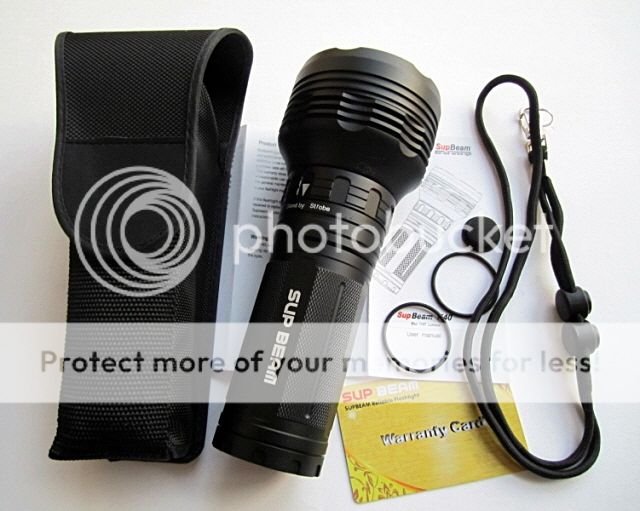
Packaging is a nice aluminum box with built-in packaging foam. Included inside is the light, user manual, warranty card, extra o-rings, tailcap rubber switch boot, lanyard, nice holster.
.
.
Manufacturer Specifications from SupBeam website & user manual :
- Cree XM-L U2 LEDs with lifespan 20yrs of runtime
- Max. 1147 lumens output (3x18650)
- Output (selected by magnetic ring) :
Level 1 : 0.5 lm (2000hrs)
Level 2 : 21 lm (140hrs)
Level 3 : 146 lm (22hrs)
Level 4 : 360 lm (9hrs)
Level 5 : 620 lm (5hrs)
Level 6 : 1147 lm (2hrs)
- Standby current : 65uA
- Strobe : 1147 lm (4hrs)
- Working voltage : 4v~13v
- Max. Runtime : 2000hrs
- Max. beam : 700meters
- Peak beam intensity : 75000cd
- Aircraft grade aluminum body structure
- Premium Type III hard anodized anti-abrasive finish
- Ultra-clear tempered glass lens with anti-reflective coating
- Momentary forward click tactical switch
- Strobe mode for tactical and emergency use
- Smooth reflector for max. light output
- Highly focus beam for maximum distance
- Tactical knurling for firm grip
- Streamlined body design
- Mechanical reversed polarity protected design
- Intelligent high efficient circuit for max performance and runtime
- Intelligent temperature controlled light output for safety
- Impact resistant 1.2meters
- Waterproof : IPX-8 Standard (2meters)
- Size 186mm x 76.2mm
- Weight 453g
* Notice : The above mentioned parameters (tested with three 2600mAh batteries) are approximate and may vary between flashlights, batteries, and environments.
.
.
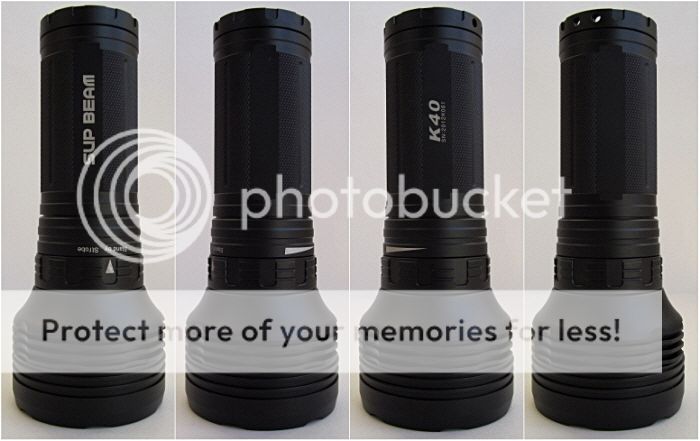
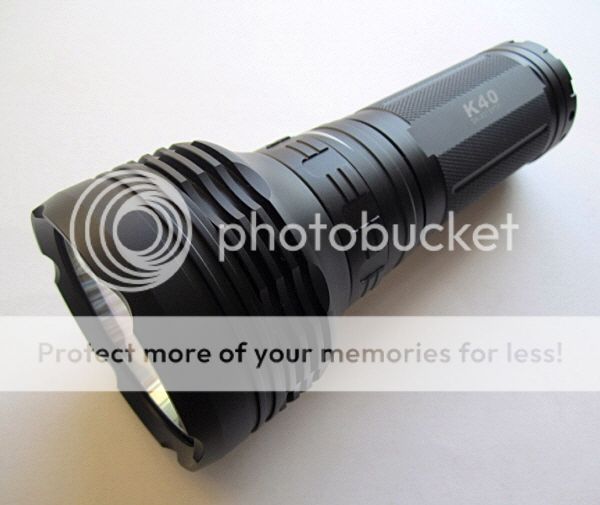
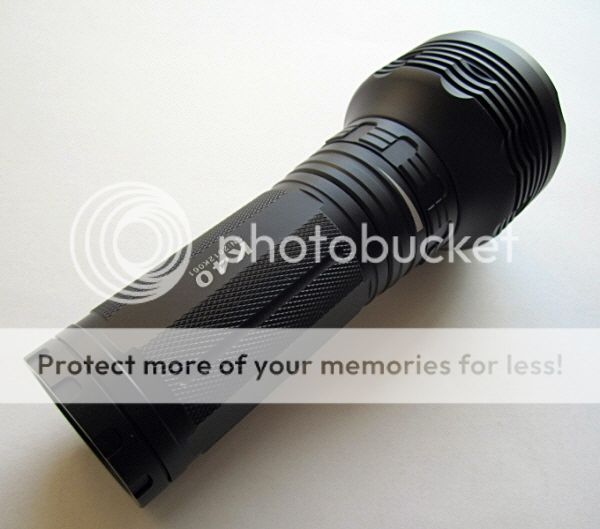
The hard (type III) anodizing is black, with no chips or damage on my sample. The labels
on the body are clear, bright white gainst the background. There is a label mark on the control ring that lines up with the labels on the head. The manufacturer and model name are printed on the battery tube. The knurling is present over battery tube only.
.
.
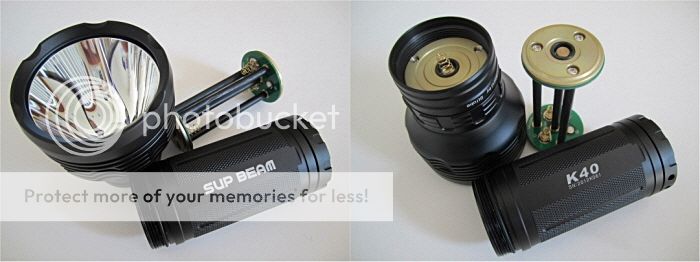
The light has mainly 2 parts (i.e. head and battery tube) There is a battery carrier as well.
.
.
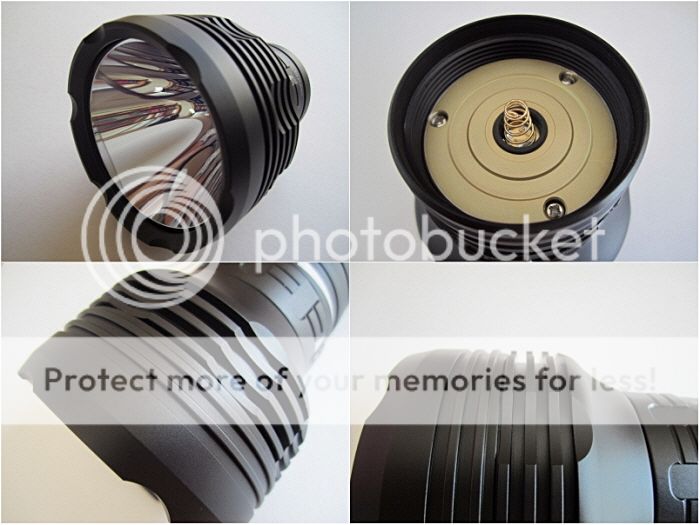
The light has a scalloped bezel ring and a waterproof o-ring between the bezel ring and reflector. There are two shallow and three deep cooling fins on the head. The head base of the light has a positive contact spring to contact with the positive contact of the battery carrier. The very wide negative contact rim surrounds the central positive contact.
.
.
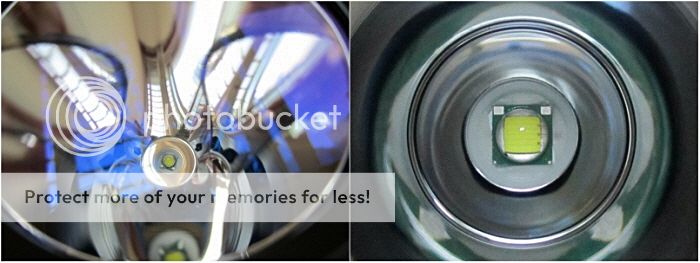
The light uses a very nice AR coating lens, and the sky blue hue is reflected on it.
The very large (inner dia. 63.8mm) and deep aluminum (overall depth 51.2mm) reflector is smooth, and nicely finished. The K40 uses a XM-L U2 emitter, it's perfectly centered in the bottom of the reflector cup. I would expect excellent throwy beam.
.
.
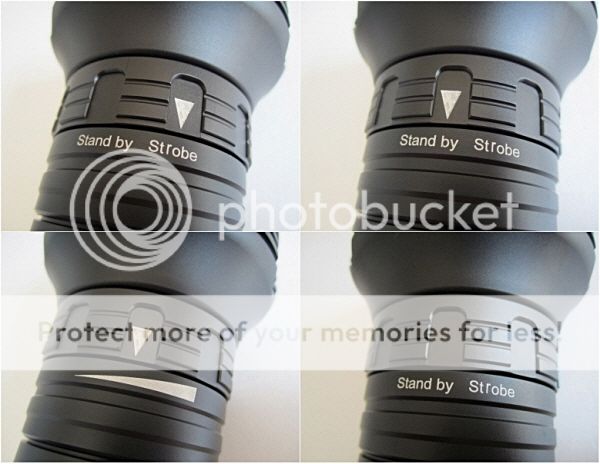
There is a control ring, located below the cooling fins. All six constant output switching including Standby and Strobe is controlled entirely by the control ring. The light has ten slight indents on the control ring to help with feel. There is a label mark (▼) on the control ring that lines up with the labels on the head. The individual six constant output levels are not labeled on the head, but there is a graded output arrow (◢) which shows the direction of the output levels. There are firm detents at each level, with a slight click. So you may need to count detents to figure out what output level you are set to.
The total traverse of the control ring is about 165 degrees of the light. The control ring action is not so smooth than I expected.
.
.
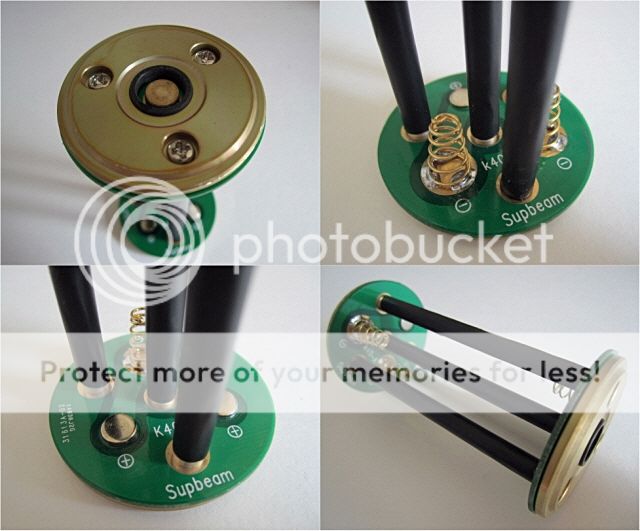
The light uses a metal battery carrier that holds 3x18650 cells in series. It looks sturdy and well-made. The positive contact plate is slightly raised, and the negative contact spring has good elasticity. So all types (i.e., true flat-tops, wide and small button-tops) of 18650's work fine. Longer cells may be somewhat tight, but all my protected high capacity (2600~3100mAh) cells fit. You can insert the battery carrier either orientation into the battery tube (i.e., it's reversible), because it has same ends with positive and negative connection terminals. But you should be careful to insert the 18650's into the battery carrier in the correct polarity.
.
.
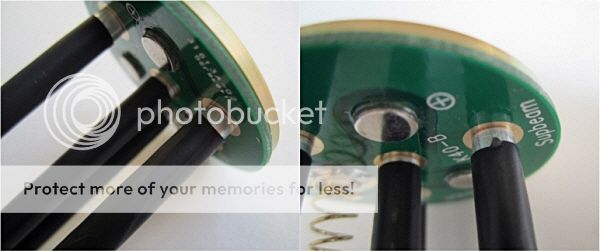
I would have hoped for the fully heat-shrink tubing around the legs and the consistent tubing surface of the legs along with the length.
.
.
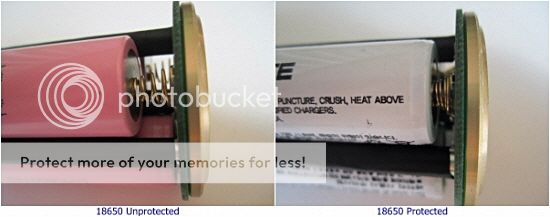
You can see the fully loaded battery carrier with unprotected & protected cells. I don't have any issue to insert my shortest & longest 18650 cells into the carrier. But the positive contact plate may catch on the heatshrink on the flat cells when removing them. So I need to first depress the cells towards the negative spring before removing them. Note that the cells with wider dia. will have difficulty when inserting or removing from the battery tube. The battery carrier introduces little rattle if you shake the light laterally when it's fully loaded with 18650's unprotected . But no rattle with the protected 18650 cells installed in my sample. Note that only 3x18650 li-ion cells can be used in the light (i.e., it doesn't support multiple CR123A or RCR123A due to 4~13V working voltage).
.
.
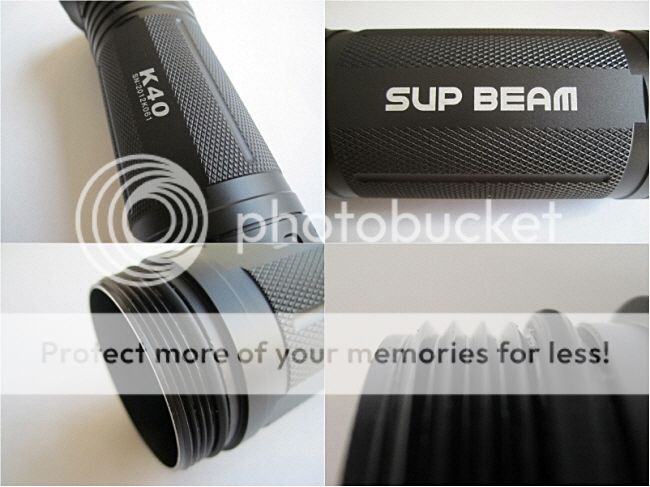
Screw threads are triangular cut, but seems good quality. Note that both male & female threads on the head & tube are anodized for head lock-out. They are smooth with no cross-threading or squeaking on my sample.
.
.
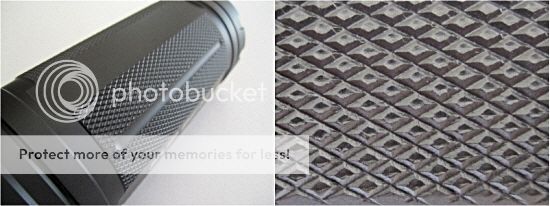
Mostly the battery tube continues the cylindrical shape with four flat, long rectangular surfaces. The diamond-shaped knurling is presented over most of the battery tube except four flat, long rectangular sides, and it's a bit aggressive on the handle, helping with grip.
.
.
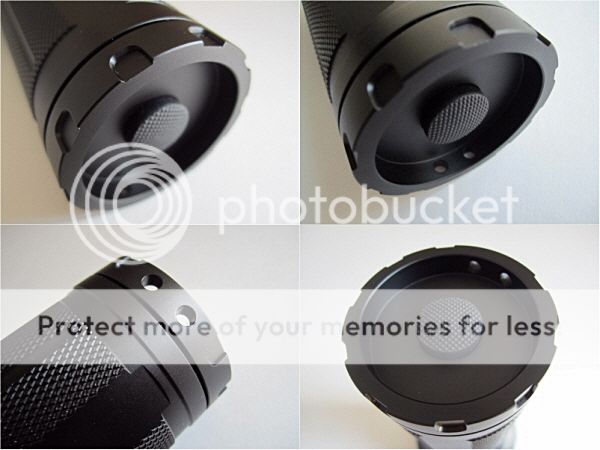
The switch is the forward click switch which allows the light to be momentarily activated by half-pressing the switch while not affective the mode changing which is completely controlled by the control ring on the head. The switching travel is slightly longer than average, with average resistance and provides audible click when engaged. The switch cap sits recessed within the tail end which allows the light tail stand perfectly. There is no cut-out facilitate easily access to the switch. There are a couple of holes at the rear end for small lanyard attachment.
.
.
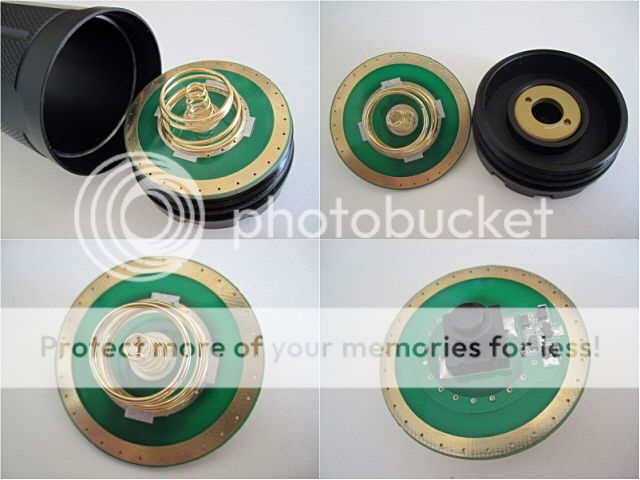
The tail cap is screwed to the battery tube together, and can be removed from the tube without any tools. There is dual springs (i.e., inner & outer springs) in the base. On the opposite side of the base, you will see the mechanical tail switch with a circuit. SupBeam says the electronic circuit can work by current 5A. In case of using a simple mechanical on-off switch, it can't accept 5A current. There is an o-ring at the tail threads as well.
.
.
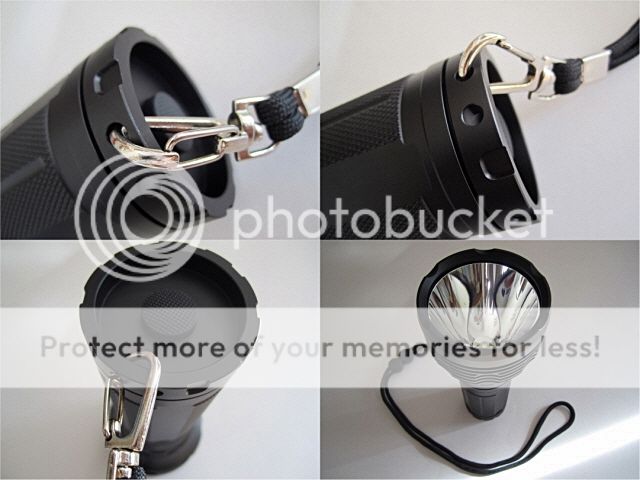
You can attach the lanyard came with the light as shown above. I found it's easy to attach the lanyard without a split ring. The light can tailstand with the lanyard attached.
.
.
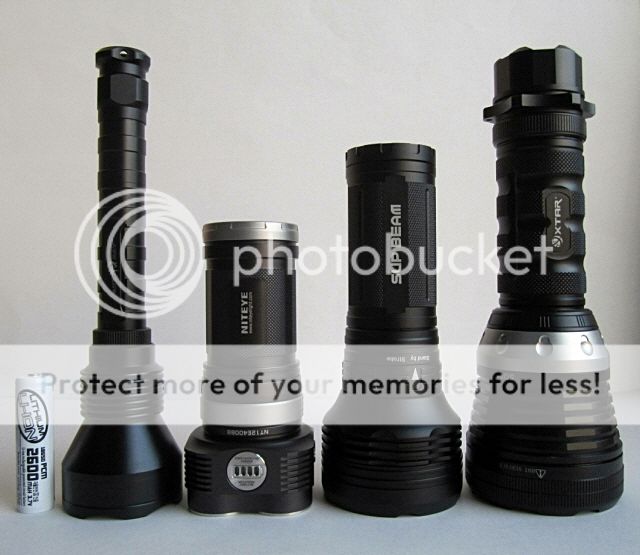
From left to right, VicLite 18650 protected, Skyray STL-V2, Niteye Eye40, SupBeam K40, Xtar S1.
.
.
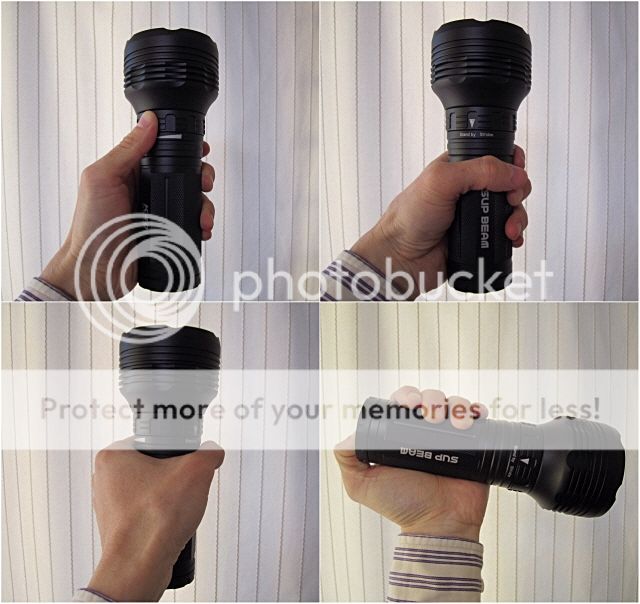
The light is a good size with a right weight to manage it. The operating the control ring with two fingers (i.e., thumb and index finger) is relatively easy, but difficult with the thumb only. The gripability seems good. I find handling & balance of the light is good. Overall build quality is very high.
.
.
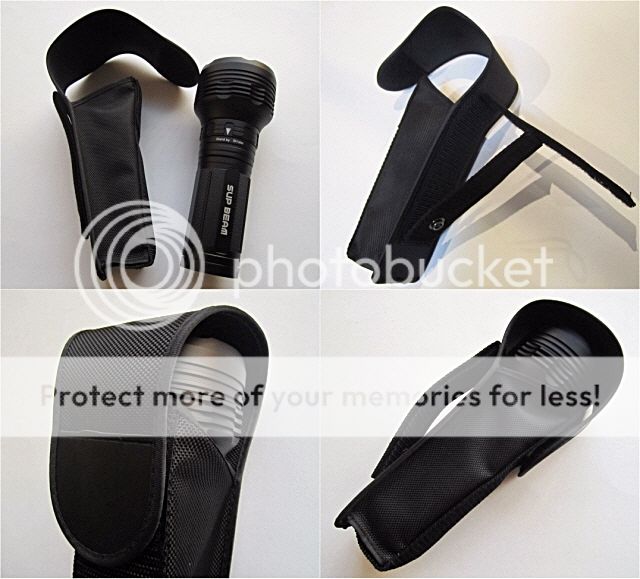
K40 comes with a nice nylon holster with a velcro strap on the head. The light fits in the holster head-up only.
.
.
Measured Dimensions & Weight
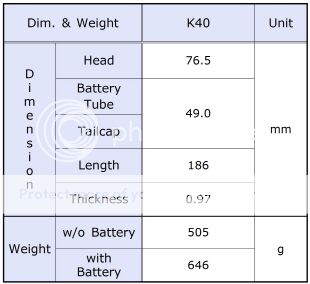
.
.
User Interface
On-off is controlled by the tailcap forward switch and output switching is controlled by the control ring in the head. Turn the light on-off by the tailcap clicky – press for momentary, press and release (i.e., click) for constant on.
There are six constant output levels, standby, and strobe. Change output modes by turning the control ring in the head. Arranged from left to right (with the head facing forward) in the following order. L1 (min. output) -> L2 -> L3 -> L4 -> L5 -> L6 (max. output) -> standby -> strobe.
No light is produced on standby, but a small current will be drawn to allow the circuit to respond to a ring turn as described below.
.
.
Standby Current Drain
Due to the control ring and electronic tail switch, the light has a small current when fully connected and control ring arrow is pointing at standby mode and the tailcap switch is clicked on.
I measured this current as 59.5μA with 3xVicLite 2600mAh on the head, and measured as 14.9μA on the tailcap. There is no current draw when the tailcap switch turned off as expected. Since the cells are arranged in series for 3x18650 cells, that would translate into around 4 years before the cells would be fully drained. Note this (74.4μA) is slightly higher the 65uA standby current listed in the manual, but this is quite reasonable for a standby current. If you want to break this current, store the light locked-out by loosening the head or turn the light off by the tailcap clicky when not in use.
.
.
PWM
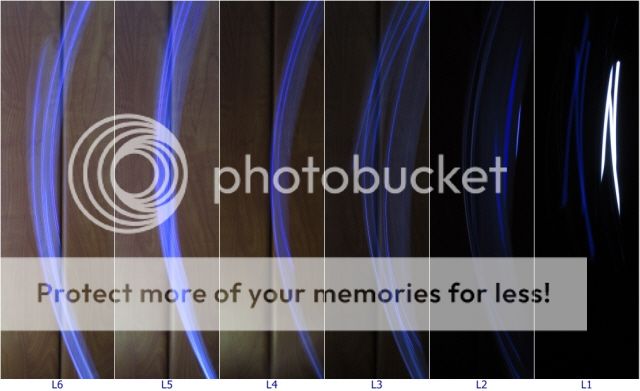
The light shows no sign of PWM at any output levels. I think the light is actually current-controlled as claimed. I notice there is neither buzzing sound nor tint-shift at all output levels with the naked eye on my sample.
.
.
Runtime
1. Fan Cooling
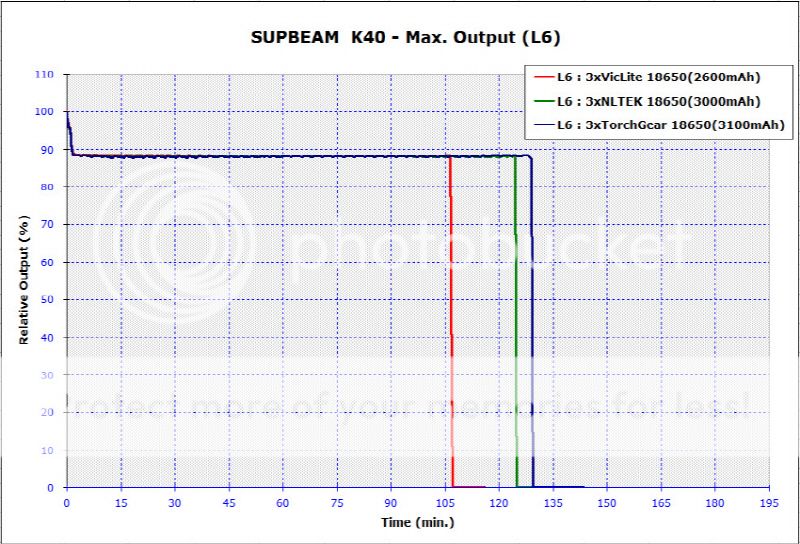
Runtime performance is very good and flat regulation is evident on L6 I tested. The light settles around the 88% output mark for the runtime with cooling. I could see the light dropped down to a very low output mode similar to moonlight, instead of completely shutting off when the battery protection circuit was reached, and it flickered shortly three times every 25 seconds at a very low output for low battery warning.
The runtime for 10% output of max. output (L6) for various 18650 is as follows.
1) 3xVicLite (2600mAh) : 107 min.
2) 3xNLTEK (3000mAh) : 125 min.
3) 3xTorthGear (3100mAh) : 130 min.
* Note that the original cell of the NLTEK is LGABD11865 (3000mAh), and its maximum charging voltage is 4.35v for full capacity. But charged it 4.2v for runtime test, so the capacity is about 2700mAh reduced with about 300mAh.
.
.
2. No Cooling
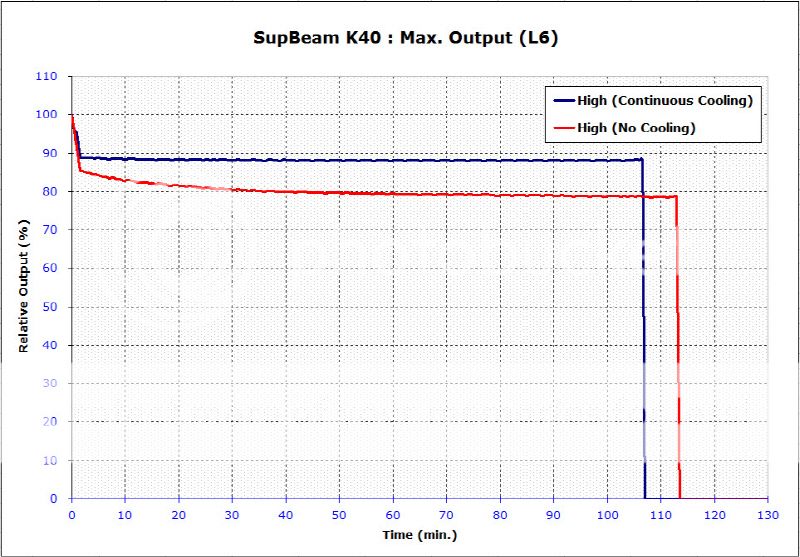
I have done a comparison of fan cooling and no cooling for the light, and measured surface temperature on the no cooling run as I had done that in EYE40 review. The lack of cooling caused a small drop (4~10%) in output over the time, along with max. output (L6), but it's practically impossible for you to see the difference visually. This resulted in longer runtime. The light shows around the 78% output mark at least for the runtime with no fan cooling.
.
.
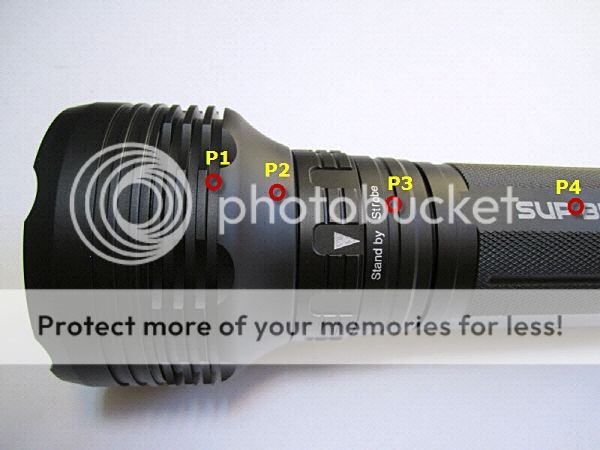
You can see the four points on the light where the thermal probes were set in pace as illustrated above for no fan cooling run.
I measured with thermal probes attached to four points of the light for the no cooling run only. The room temp. was 22.2~22.7 degrees, and window was ajar on the test room. The resting temp. for K40 was 24.8 degrees.
.
.
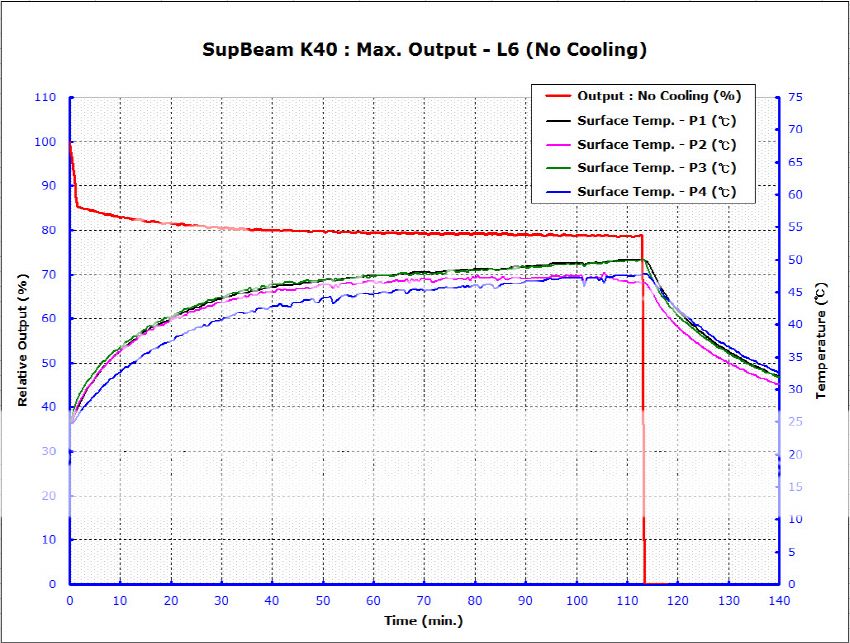
Note that left y-axis is the relative output. The black, cyan, green, and blue lines represent surface temperatures of the light in degrees centigrade (celsius) should be read off the right y-axis. The temperature continued to slowly rise in the course of the max. output (L6) run, reaching a max. 50 degrees at the points #1 and #3. The temp. at the point #4 (i.e., battery tube) reached a max. 48 degrees. It's almost impossible to express the graph in writing, but the light get hot (but not too hot, rather warm).
.
.
Beamshot
1. White door beamshot
- ISO100, F/3.5, 1/40sec, Auto white balance
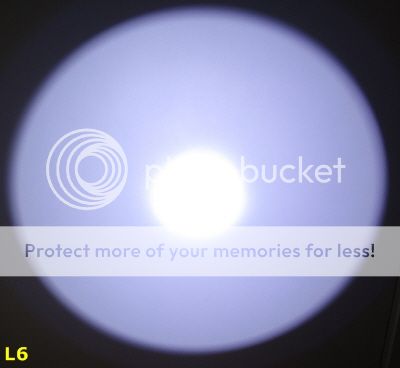
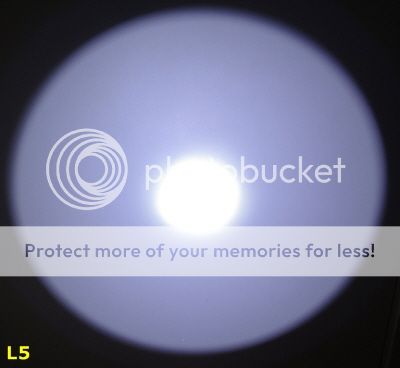
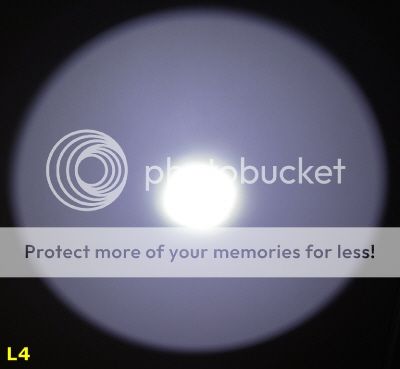

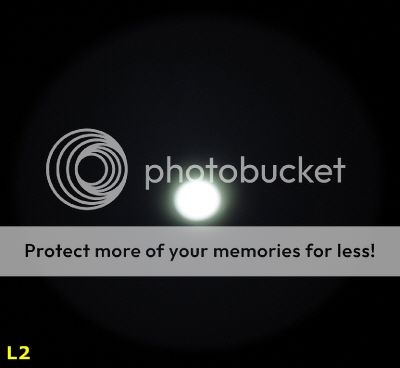
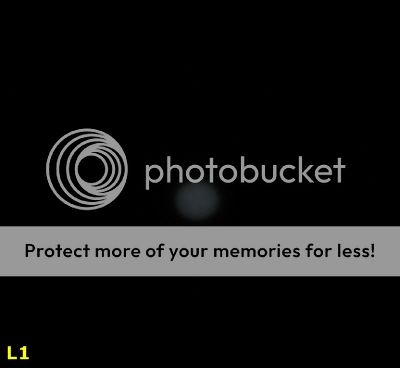
The overall beam profile is very clean without noticeable flaws and has an intensely small hot spot. The spill beam is pretty wide and it is rather dim relative to the hot spot.
.
.
2. 55m Outdoor Beamshot
- ISO100, F/2.8, 1sec, Auto white balance
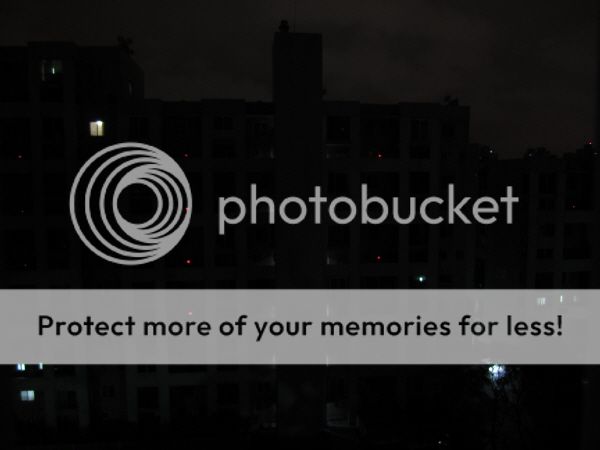
- Control Shot
.
.
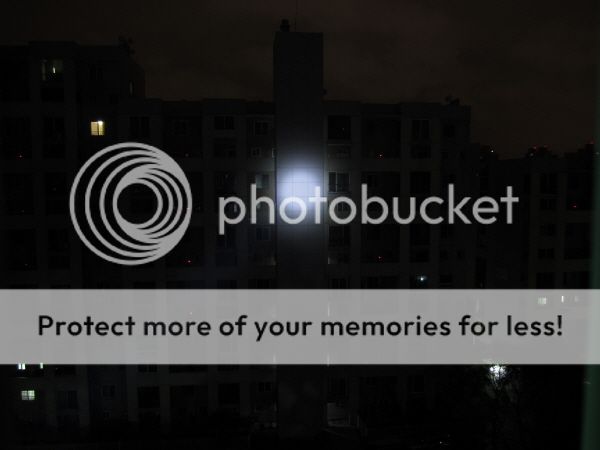
- STL-V2
.
.

- K40
.
.
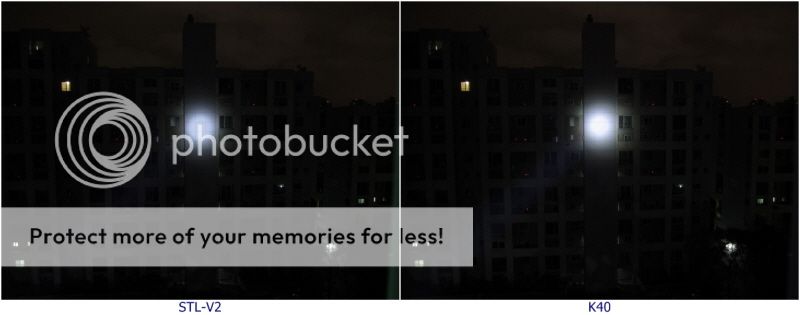
.
.
3. 60~65m Outdoor Beamshot
- ISO100, F/2.8, 1sec, Auto white balance
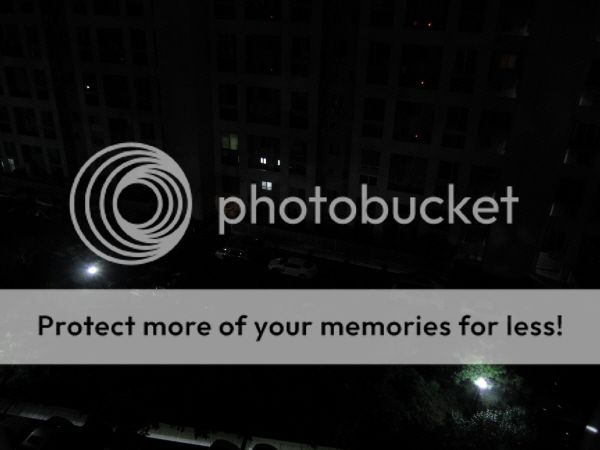
- Control Shot
.
.
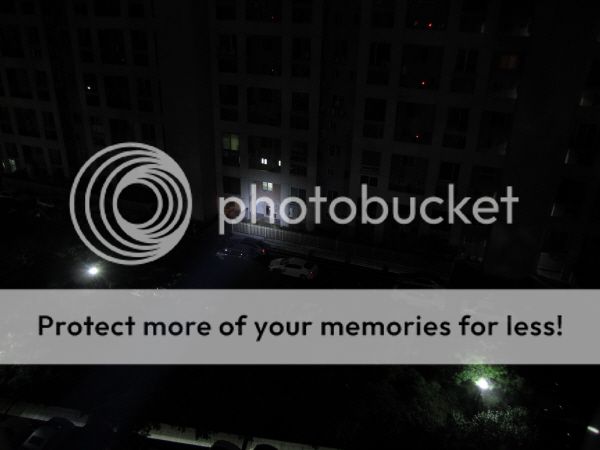
- STL-V2
.
.

- K40
.
.
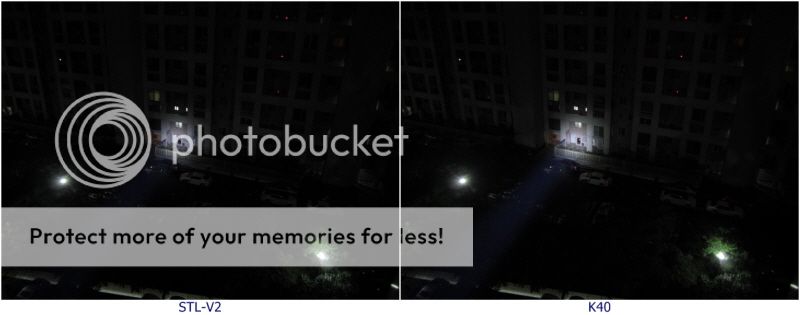
.
.
4. 130m Outdoor Beamshot
- ISO100, F/2.8, 1sec, Auto white balance
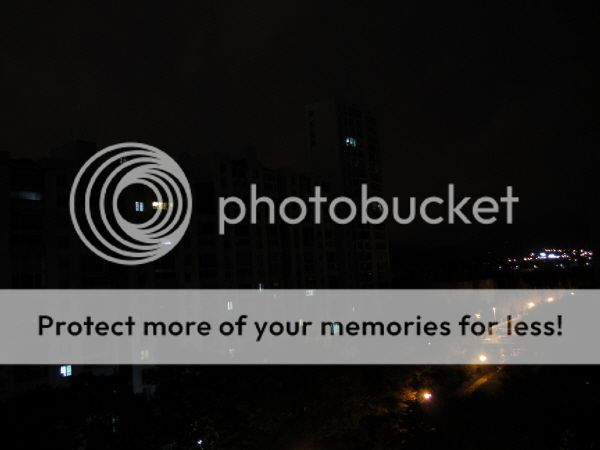
- Control Shot
.
.
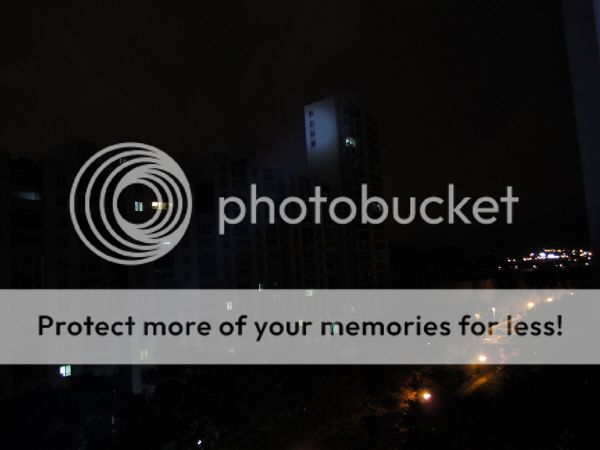
- STL-V2
.
.
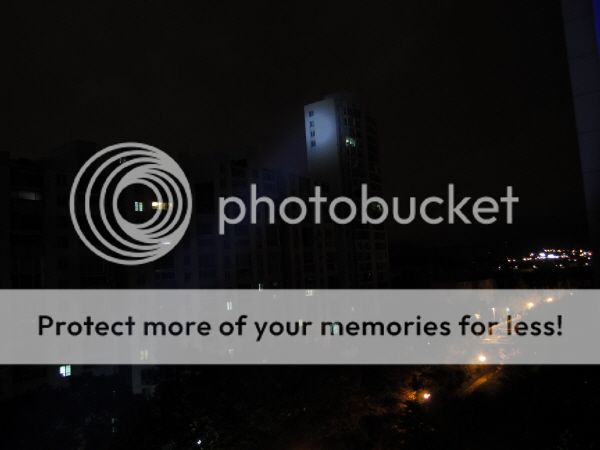
- K40
.
.
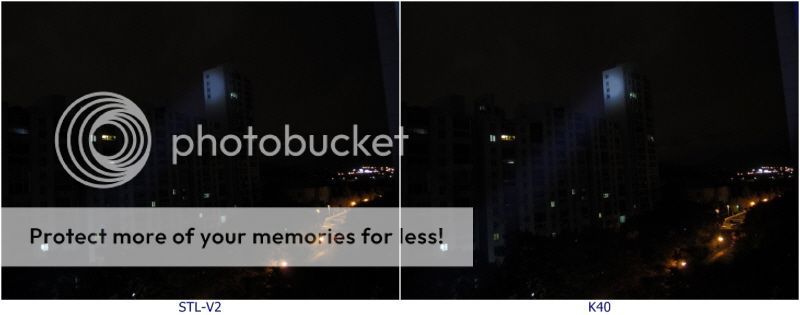
.
.
5. [Edit 12.11.05] 155m Outdoor Beamshot [Edit 12.11.05]
- ISO100, F/2.8, 1sec, Auto white balance
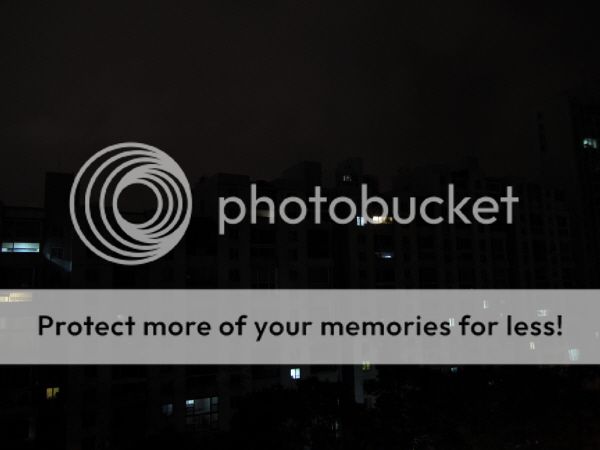
- Control Shot
.
.
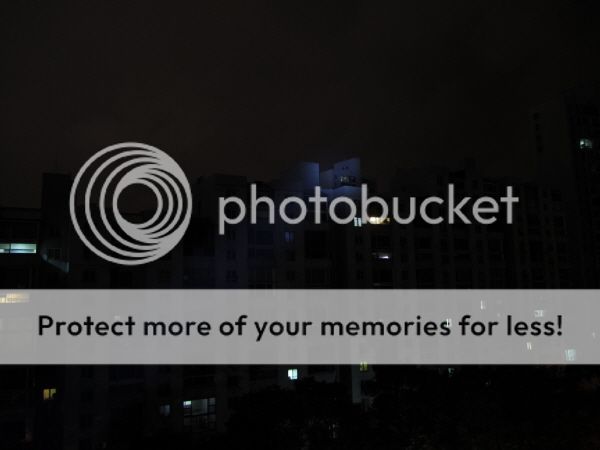
- STL-V2
.
.
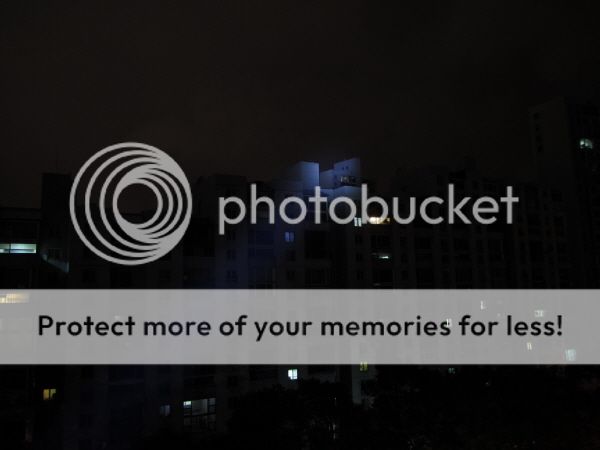
- K40
.
.
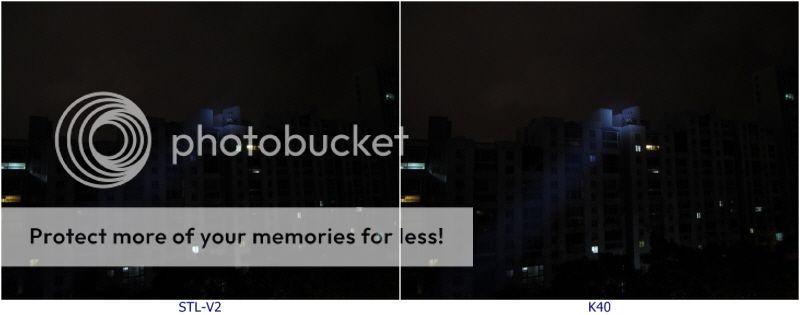
.
.
* K40 provided by SupBeam for review. (Thanks!)
.
The K40 is a high-output thrower flashlight with a XM-L U2 installed, runs on 3x18650 batteries, which I will be reviewing.


Packaging is a nice aluminum box with built-in packaging foam. Included inside is the light, user manual, warranty card, extra o-rings, tailcap rubber switch boot, lanyard, nice holster.
.
.
Manufacturer Specifications from SupBeam website & user manual :
- Cree XM-L U2 LEDs with lifespan 20yrs of runtime
- Max. 1147 lumens output (3x18650)
- Output (selected by magnetic ring) :
Level 1 : 0.5 lm (2000hrs)
Level 2 : 21 lm (140hrs)
Level 3 : 146 lm (22hrs)
Level 4 : 360 lm (9hrs)
Level 5 : 620 lm (5hrs)
Level 6 : 1147 lm (2hrs)
- Standby current : 65uA
- Strobe : 1147 lm (4hrs)
- Working voltage : 4v~13v
- Max. Runtime : 2000hrs
- Max. beam : 700meters
- Peak beam intensity : 75000cd
- Aircraft grade aluminum body structure
- Premium Type III hard anodized anti-abrasive finish
- Ultra-clear tempered glass lens with anti-reflective coating
- Momentary forward click tactical switch
- Strobe mode for tactical and emergency use
- Smooth reflector for max. light output
- Highly focus beam for maximum distance
- Tactical knurling for firm grip
- Streamlined body design
- Mechanical reversed polarity protected design
- Intelligent high efficient circuit for max performance and runtime
- Intelligent temperature controlled light output for safety
- Impact resistant 1.2meters
- Waterproof : IPX-8 Standard (2meters)
- Size 186mm x 76.2mm
- Weight 453g
* Notice : The above mentioned parameters (tested with three 2600mAh batteries) are approximate and may vary between flashlights, batteries, and environments.
.
.



The hard (type III) anodizing is black, with no chips or damage on my sample. The labels
on the body are clear, bright white gainst the background. There is a label mark on the control ring that lines up with the labels on the head. The manufacturer and model name are printed on the battery tube. The knurling is present over battery tube only.
.
.

The light has mainly 2 parts (i.e. head and battery tube) There is a battery carrier as well.
.
.

The light has a scalloped bezel ring and a waterproof o-ring between the bezel ring and reflector. There are two shallow and three deep cooling fins on the head. The head base of the light has a positive contact spring to contact with the positive contact of the battery carrier. The very wide negative contact rim surrounds the central positive contact.
.
.

The light uses a very nice AR coating lens, and the sky blue hue is reflected on it.
The very large (inner dia. 63.8mm) and deep aluminum (overall depth 51.2mm) reflector is smooth, and nicely finished. The K40 uses a XM-L U2 emitter, it's perfectly centered in the bottom of the reflector cup. I would expect excellent throwy beam.
.
.

There is a control ring, located below the cooling fins. All six constant output switching including Standby and Strobe is controlled entirely by the control ring. The light has ten slight indents on the control ring to help with feel. There is a label mark (▼) on the control ring that lines up with the labels on the head. The individual six constant output levels are not labeled on the head, but there is a graded output arrow (◢) which shows the direction of the output levels. There are firm detents at each level, with a slight click. So you may need to count detents to figure out what output level you are set to.
The total traverse of the control ring is about 165 degrees of the light. The control ring action is not so smooth than I expected.
.
.

The light uses a metal battery carrier that holds 3x18650 cells in series. It looks sturdy and well-made. The positive contact plate is slightly raised, and the negative contact spring has good elasticity. So all types (i.e., true flat-tops, wide and small button-tops) of 18650's work fine. Longer cells may be somewhat tight, but all my protected high capacity (2600~3100mAh) cells fit. You can insert the battery carrier either orientation into the battery tube (i.e., it's reversible), because it has same ends with positive and negative connection terminals. But you should be careful to insert the 18650's into the battery carrier in the correct polarity.
.
.

I would have hoped for the fully heat-shrink tubing around the legs and the consistent tubing surface of the legs along with the length.
.
.

You can see the fully loaded battery carrier with unprotected & protected cells. I don't have any issue to insert my shortest & longest 18650 cells into the carrier. But the positive contact plate may catch on the heatshrink on the flat cells when removing them. So I need to first depress the cells towards the negative spring before removing them. Note that the cells with wider dia. will have difficulty when inserting or removing from the battery tube. The battery carrier introduces little rattle if you shake the light laterally when it's fully loaded with 18650's unprotected . But no rattle with the protected 18650 cells installed in my sample. Note that only 3x18650 li-ion cells can be used in the light (i.e., it doesn't support multiple CR123A or RCR123A due to 4~13V working voltage).
.
.

Screw threads are triangular cut, but seems good quality. Note that both male & female threads on the head & tube are anodized for head lock-out. They are smooth with no cross-threading or squeaking on my sample.
.
.

Mostly the battery tube continues the cylindrical shape with four flat, long rectangular surfaces. The diamond-shaped knurling is presented over most of the battery tube except four flat, long rectangular sides, and it's a bit aggressive on the handle, helping with grip.
.
.

The switch is the forward click switch which allows the light to be momentarily activated by half-pressing the switch while not affective the mode changing which is completely controlled by the control ring on the head. The switching travel is slightly longer than average, with average resistance and provides audible click when engaged. The switch cap sits recessed within the tail end which allows the light tail stand perfectly. There is no cut-out facilitate easily access to the switch. There are a couple of holes at the rear end for small lanyard attachment.
.
.

The tail cap is screwed to the battery tube together, and can be removed from the tube without any tools. There is dual springs (i.e., inner & outer springs) in the base. On the opposite side of the base, you will see the mechanical tail switch with a circuit. SupBeam says the electronic circuit can work by current 5A. In case of using a simple mechanical on-off switch, it can't accept 5A current. There is an o-ring at the tail threads as well.
.
.

You can attach the lanyard came with the light as shown above. I found it's easy to attach the lanyard without a split ring. The light can tailstand with the lanyard attached.
.
.

From left to right, VicLite 18650 protected, Skyray STL-V2, Niteye Eye40, SupBeam K40, Xtar S1.
.
.

The light is a good size with a right weight to manage it. The operating the control ring with two fingers (i.e., thumb and index finger) is relatively easy, but difficult with the thumb only. The gripability seems good. I find handling & balance of the light is good. Overall build quality is very high.
.
.

K40 comes with a nice nylon holster with a velcro strap on the head. The light fits in the holster head-up only.
.
.
Measured Dimensions & Weight

.
.
User Interface
On-off is controlled by the tailcap forward switch and output switching is controlled by the control ring in the head. Turn the light on-off by the tailcap clicky – press for momentary, press and release (i.e., click) for constant on.
There are six constant output levels, standby, and strobe. Change output modes by turning the control ring in the head. Arranged from left to right (with the head facing forward) in the following order. L1 (min. output) -> L2 -> L3 -> L4 -> L5 -> L6 (max. output) -> standby -> strobe.
No light is produced on standby, but a small current will be drawn to allow the circuit to respond to a ring turn as described below.
.
.
Standby Current Drain
Due to the control ring and electronic tail switch, the light has a small current when fully connected and control ring arrow is pointing at standby mode and the tailcap switch is clicked on.
I measured this current as 59.5μA with 3xVicLite 2600mAh on the head, and measured as 14.9μA on the tailcap. There is no current draw when the tailcap switch turned off as expected. Since the cells are arranged in series for 3x18650 cells, that would translate into around 4 years before the cells would be fully drained. Note this (74.4μA) is slightly higher the 65uA standby current listed in the manual, but this is quite reasonable for a standby current. If you want to break this current, store the light locked-out by loosening the head or turn the light off by the tailcap clicky when not in use.
.
.
PWM

The light shows no sign of PWM at any output levels. I think the light is actually current-controlled as claimed. I notice there is neither buzzing sound nor tint-shift at all output levels with the naked eye on my sample.
.
.
Runtime
1. Fan Cooling

Runtime performance is very good and flat regulation is evident on L6 I tested. The light settles around the 88% output mark for the runtime with cooling. I could see the light dropped down to a very low output mode similar to moonlight, instead of completely shutting off when the battery protection circuit was reached, and it flickered shortly three times every 25 seconds at a very low output for low battery warning.
The runtime for 10% output of max. output (L6) for various 18650 is as follows.
1) 3xVicLite (2600mAh) : 107 min.
2) 3xNLTEK (3000mAh) : 125 min.
3) 3xTorthGear (3100mAh) : 130 min.
* Note that the original cell of the NLTEK is LGABD11865 (3000mAh), and its maximum charging voltage is 4.35v for full capacity. But charged it 4.2v for runtime test, so the capacity is about 2700mAh reduced with about 300mAh.
.
.
2. No Cooling

I have done a comparison of fan cooling and no cooling for the light, and measured surface temperature on the no cooling run as I had done that in EYE40 review. The lack of cooling caused a small drop (4~10%) in output over the time, along with max. output (L6), but it's practically impossible for you to see the difference visually. This resulted in longer runtime. The light shows around the 78% output mark at least for the runtime with no fan cooling.
.
.

You can see the four points on the light where the thermal probes were set in pace as illustrated above for no fan cooling run.
I measured with thermal probes attached to four points of the light for the no cooling run only. The room temp. was 22.2~22.7 degrees, and window was ajar on the test room. The resting temp. for K40 was 24.8 degrees.
.
.

Note that left y-axis is the relative output. The black, cyan, green, and blue lines represent surface temperatures of the light in degrees centigrade (celsius) should be read off the right y-axis. The temperature continued to slowly rise in the course of the max. output (L6) run, reaching a max. 50 degrees at the points #1 and #3. The temp. at the point #4 (i.e., battery tube) reached a max. 48 degrees. It's almost impossible to express the graph in writing, but the light get hot (but not too hot, rather warm).
.
.
Beamshot
1. White door beamshot
- ISO100, F/3.5, 1/40sec, Auto white balance






The overall beam profile is very clean without noticeable flaws and has an intensely small hot spot. The spill beam is pretty wide and it is rather dim relative to the hot spot.
.
.
2. 55m Outdoor Beamshot
- ISO100, F/2.8, 1sec, Auto white balance

- Control Shot
.
.

- STL-V2
.
.

- K40
.
.

.
.
3. 60~65m Outdoor Beamshot
- ISO100, F/2.8, 1sec, Auto white balance

- Control Shot
.
.

- STL-V2
.
.

- K40
.
.

.
.
4. 130m Outdoor Beamshot
- ISO100, F/2.8, 1sec, Auto white balance

- Control Shot
.
.

- STL-V2
.
.

- K40
.
.

.
.
5. [Edit 12.11.05] 155m Outdoor Beamshot [Edit 12.11.05]
- ISO100, F/2.8, 1sec, Auto white balance

- Control Shot
.
.

- STL-V2
.
.

- K40
.
.

.
.
* K40 provided by SupBeam for review. (Thanks!)
.
Last edited:

